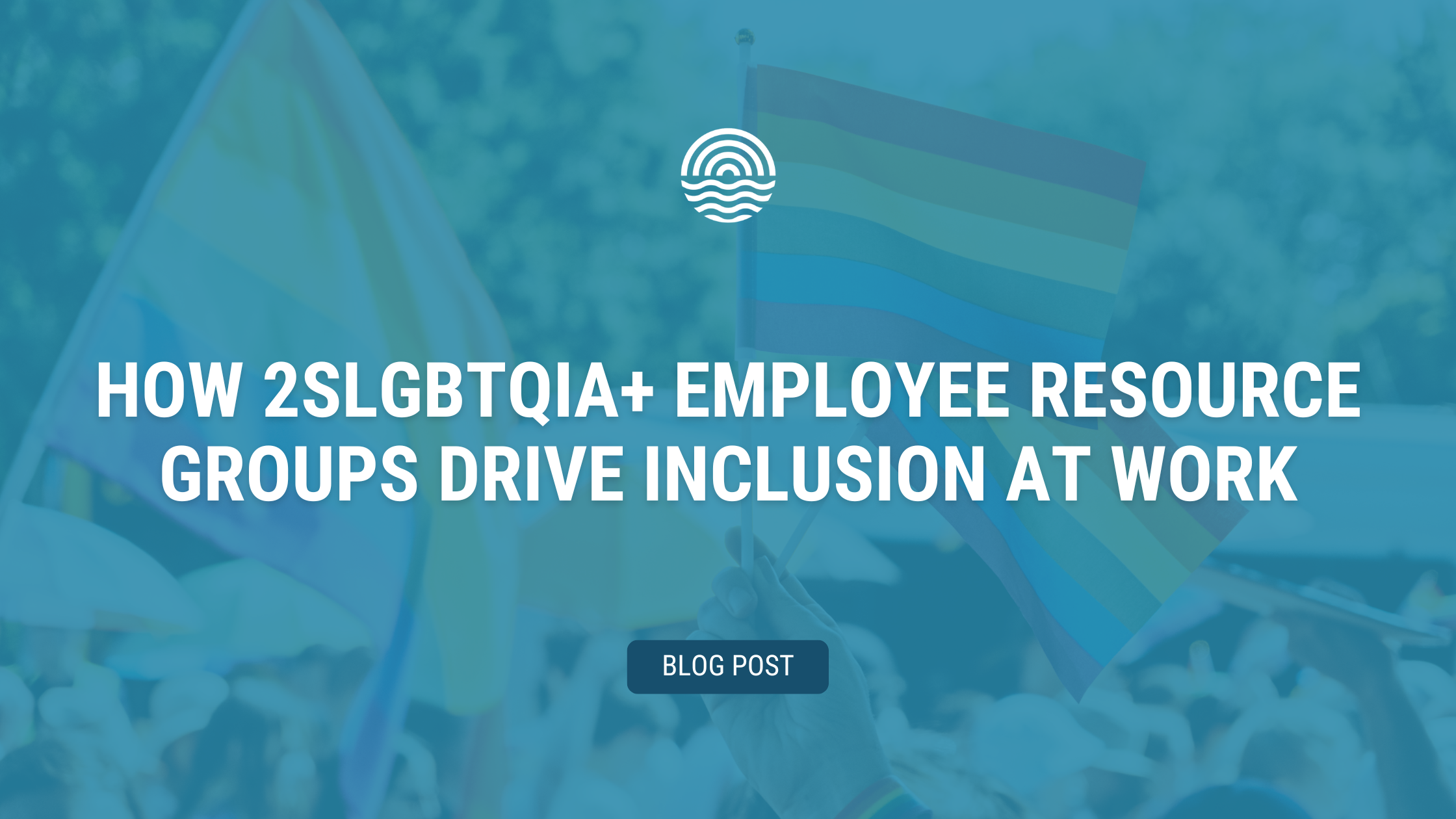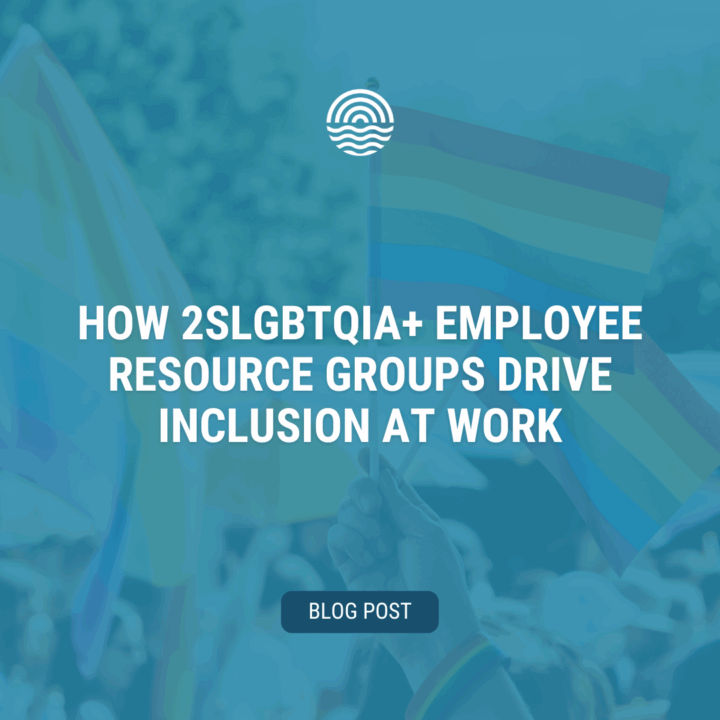
BLOG POST
HOW 2SLGBTQIA+ EMPLOYEE RESOURCE GROUPS DRIVE INCLUSION AT WORK
From shaping inclusive policies to building community and driving advocacy, Employee Resource Groups (ERGs) are powerful tools for change. When done right, 2SLGBTQIA+ ERGs can create safer, more equitable workplaces where everyone feels like they belong.
But to truly thrive, ERGs need more than enthusiasm — they need structure, support, and intention. This blog will give you an idea on where you can start!
WHAT ARE ERGs?
ERGs are voluntary, employee-led groups that bring together people with shared identities, interests, or life experiences — and their allies — to foster connection, support, and inclusion in the workplace.
ERGs often focus on underrepresented communities, such as:
- 2SLGBTQIA+ employees
- Women in leadership
- Visible minorities
- People with disabilities
- Young professionals
ERGs build community by creating space for connection and support, while also driving education and awareness across the organization. They help shape inclusive policies, develop future leaders, and play a key role in fostering a workplace where people feel valued, supported, and motivated to stay.
While ERGs are grassroots in nature, they work best when they’re formally supported by leadership and aligned with an organization’s broader DEI goals.
WHY 2SLGBTQIA+ ERGs MATTER
ERGs create space for underrepresented employees to come together, share experiences, and influence workplace culture. For 2SLGBTQIA+ team members, this can mean:
- Fostering visibility and belonging: Creating space where employees feel safe to show up as themselves.
- Driving inclusive change: Offering input on policies, benefits, and training through lived experience.
- Building allyship: Educating coworkers and leadership on how to support the community year-round.
- Empowering leadership: Giving members opportunities to lead initiatives, speak up, and shape culture from within.
WHAT MAKES AN ERG EFFECTIVE?
A successful 2SLGBTQIA+ ERG isn’t built overnight. Here’s what helps ERGs move from performative to impactful:
- Clear goals: Define what success looks like — is it influencing policy? Hosting events to engage your workforce? Creating a mentorship program?
- Leadership buy-in: Senior-level support is essential for gaining visibility and resourcing.
- Dedicated budget and time: Meaningful work takes investment, including time during work hours and funding for programming.
- Inclusive membership: ERGs should be open to allies while centering the voices of 2SLGBTQIA+ employees.
- Connection to broader DEI strategy: ERGs should have a seat at the table when it comes to shaping workplace policies and culture.
STARTING A 2SLGBTQIA+ ERG? BEGIN HERE:
- Listen first. Connect with employees to understand their needs, interests, and priorities.
- Start small. A simple lunch-and-learn or virtual coffee chat can spark meaningful connection.
- Build partnerships. Collaborate with DEI leaders, HR, or other ERGs to amplify your impact.
- Celebrate milestones. From Pride events to policy wins, take time to recognize progress.
- Commit to learning. Keep growing your company’s collective knowledge of 2SLGBTQIA+ experiences and how to support them effectively.
REMEMBER: INCLUSION IS ONGOING
Pride Month is a powerful time to reflect and recommit to your DEI goals as an organization. But ERGs help ensure that support for the 2SLGBTQIA+ community isn’t limited to a single month but instead can be woven into the culture of your organization every day.
Want help building more inclusive workplace practices?
The Waterfront DEI Council is here to help our members and their teams meaningfully embed DEI initiatives, such as ERGs, into their workplaces — creating spaces where everyone feels empowered to thrive on the waterfront. For more information on implementing ERGs in your workplaces, members can reach out and ask us about our ERG Guide for Employers!


